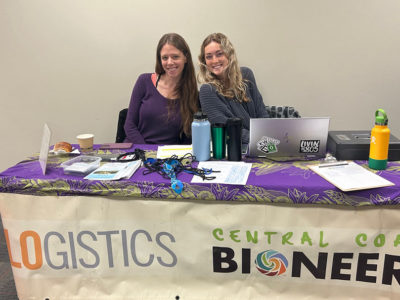Salinas River Symposium 2023
Reconnecting the River
Salinas River Symposium Overview
Ecologistics held its second Salinas River Symposium on May 5 at the Atascadero Library. Talks were given on fire prevention in the Salinas River channel, water law and environmental sustainability, the status of the groundwater sustainability plan in the Paso Robles area subbasin, repurposing flood-prone farmlands in the Salinas Valley, and a report out on a Salinas River Watershed Coordination project that took pace from 2018-2020.
Adriana Stagnaro, a graduate student at Cal Poly, and Professor Chris Dicus reported that there are more riverbed fires across the state due to climate change and the unhoused population camping there. They are working with vegetation management to protect public safety and first responders. Strategies include removing fallen limbs and dead brush and then using sheep to graze down the grass.
Attorney Tom Hicks quipped that California water law tries to make order out of chaos, but the result is more chaos. He discussed the differences between appropriative rights and riparian rights and the history of water rights going back to the gold rush era. The main goal is to get landowners to do their own conservation rather than force regulations upon them.
Blaine Reely, Director of Groundwater Sustainability for SLO County warned that there is a need to reduce groundwater pumping from the Paso Robles Subbasin by 13,700 acre-feet/year to stay sustainable. They are hoping to recover 5,000 acre-feet from recycling projects and 8,000 acre-feet from conservation of irrigated groundwater. The County has received $7.6 million in grants to help pay for water recycling projects, and expansion of well use monitoring networks.
John Olson, a freshwater scientist at Cal State Monterey Bay, discussed the benefits of e-DNA – a way of sampling downstream water to pick up the DNA of species that live upstream. There are great advantages to this in that sampling costs are less expensive, it can detect species from a wider area, and species that are otherwise hard to detect visually can be spotted. Another benefit is that e-DNA provides early detection of invasive species.
Jenny Balmagia, the Lower Salinas Valley Watershed Coordinator at the Central Coast Wetlands Group, talked about their multi-benefit land repurposing program. The group is working to purchase land along the river to turn into a riparian buffer, thereby reducing flood risk.
Senator John Laird provided the closing remarks, focusing on managing the river in a changing climate. Senator Laird noted that a fire in Santa Rosa in 1964 took two days to cover the same footprint that the 2017 fire only took six hours to cover. It is clear that climate change is the culprit. Laird pointed out that communities have an infrastructure that was designed for a climate that no longer exists. As an example, the town of Paradise had an orderly evacuation plan based on zones. This method was totally useless in the 2018 fire that destroyed the town and moved too quickly to put the plan into place. Communities are going to have to adapt to the new normal.
The Salinas River Symposium Steering Committee of Stacey Hunt and Devin Best wishes to thank MC Denise Dudley and sponsor Biodiversity First! for their support.





